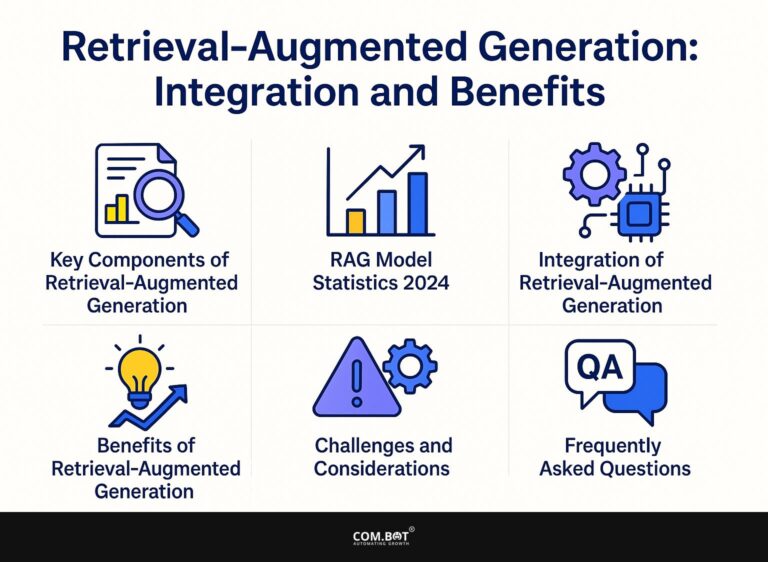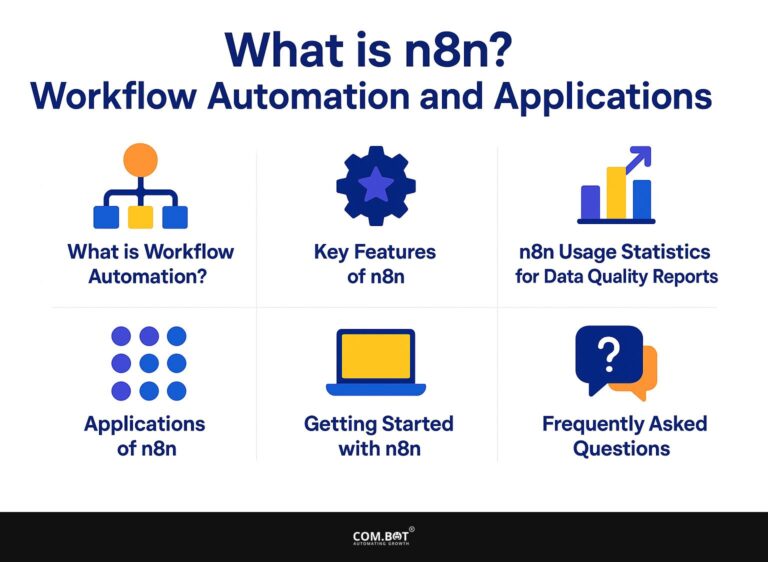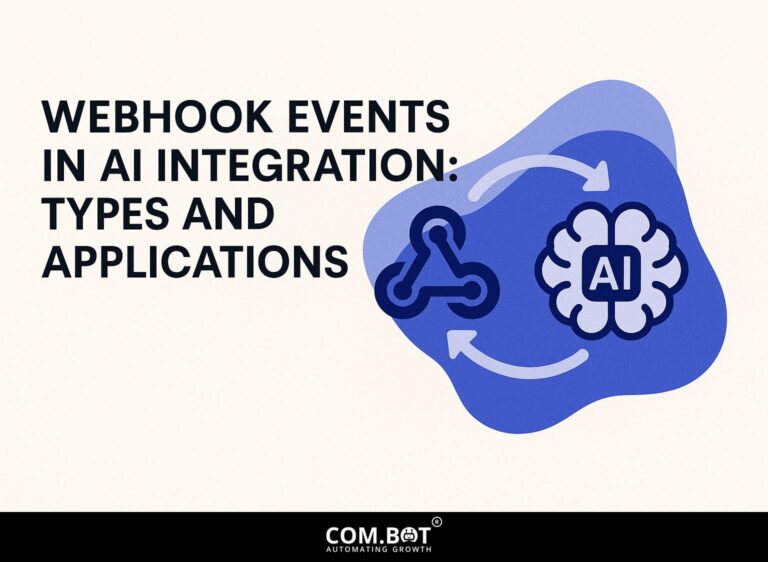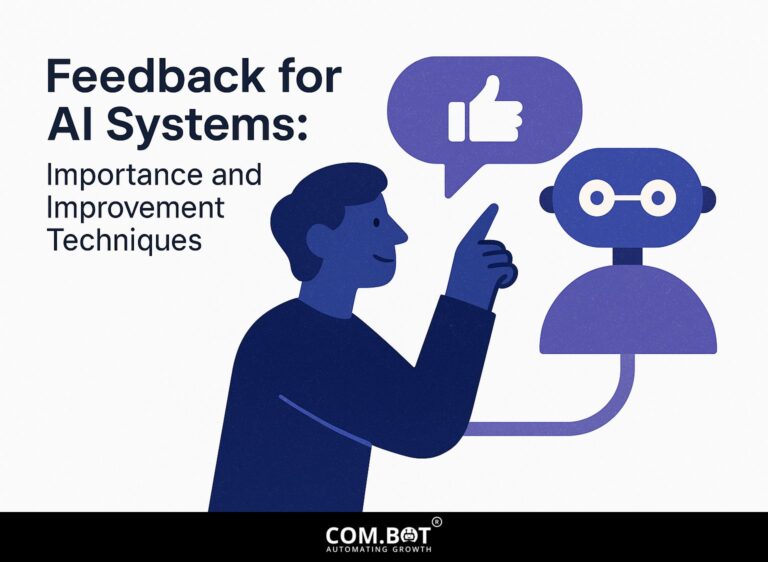Creating Custom CRM Integration: Process and Benefits
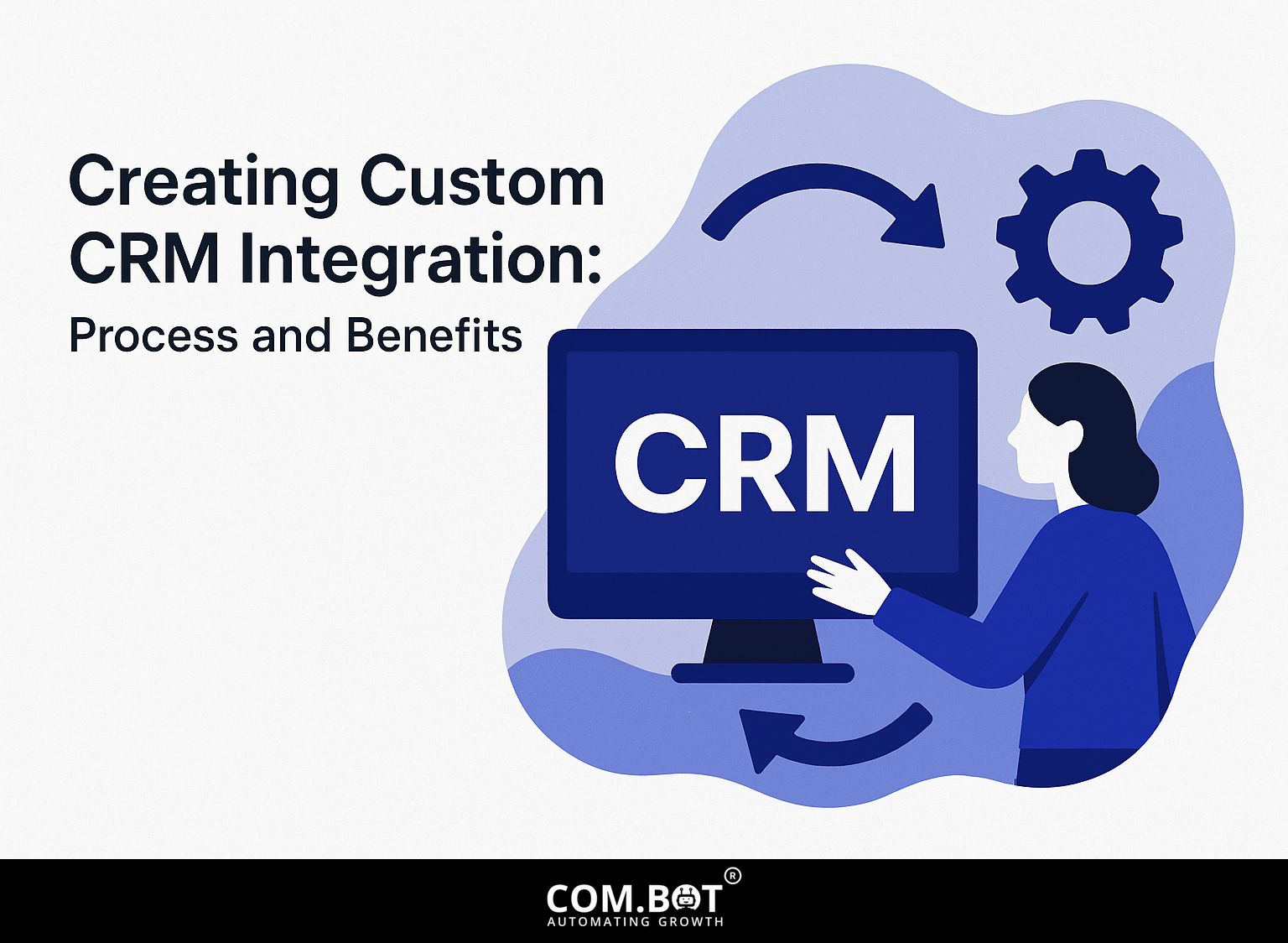
Getting the most out of your customer relationship management (CRM) system begins with personalized CRM integration. Using no-code platforms such as Creatio and SugarCRM, businesses can simplify processes and improve data connections. In this article, we’ll look at how to combine systems, the main advantages, and ways to handle usual problems, helping you to improve your CRM strategy and make customer interactions better. Let’s look at ways to make your CRM features better.
Key Takeaways:
- Connecting a custom CRM helps manage data more effectively and provides a personalized experience for customers.
- The integration process involves defining objectives, choosing the right tools, and developing a solid plan.
- Successful integration requires thorough testing, continuous improvement, and addressing technical limitations and cost considerations.
- 1 Understanding the Integration Process
- 2 Key Benefits of Custom CRM Integration
- 3 CRM Integration Statistics 2024
- 4 Challenges in Custom Integration
- 5 Best Practices for Successful Integration
- 6 Frequently Asked Questions
- 6.1 1. What is the process of creating custom CRM integration?
- 6.2 2. What are the benefits of creating custom CRM integration?
- 6.3 3. How long does it take to create custom CRM integration?
- 6.4 4. Do I need a CRM expert to create custom CRM integration?
- 6.5 5. Can I integrate multiple CRM platforms with this custom integration?
- 6.6 6. Is it possible to make changes to the custom CRM integration after it has been implemented?
1. What is CRM Integration?
CRM integration involves connecting various platforms like Creatio or SugarCRM to consolidate customer data into a single interface, allowing for seamless information sharing.
Common CRMs offer various methods to link with other systems, improving their functionality. For instance, Salesforce excels in connecting with third-party applications through its AppExchange, enabling real-time data updates.
HubSpot integrates well with email marketing tools, simplifying the management of campaigns. Zoho CRM uses APIs to sync with tools like Google Workspace, ensuring all contact and project info is current.
By using these connections, companies can organize customer information, improve teamwork among employees, and make customer interactions more personalized.
2. Importance of Customization
Customizing CRM links ensures that a business’s unique requirements are met, simplifying user experience and improving sales outcomes.
For example, connecting CRM with services like Zapier can automatically send follow-up emails, helping convert leads into regular customers.
Linking your CRM with social media platforms lets you monitor interactions as they happen and understand how customers act.
A company might implement Salesforce with a customized dashboard that includes key performance indicators, enabling sales teams to prioritize effectively.
By using these customized connections, businesses can make their processes more efficient and improve the entire customer experience, which can lead to higher satisfaction and retention.
Understanding the Integration Process
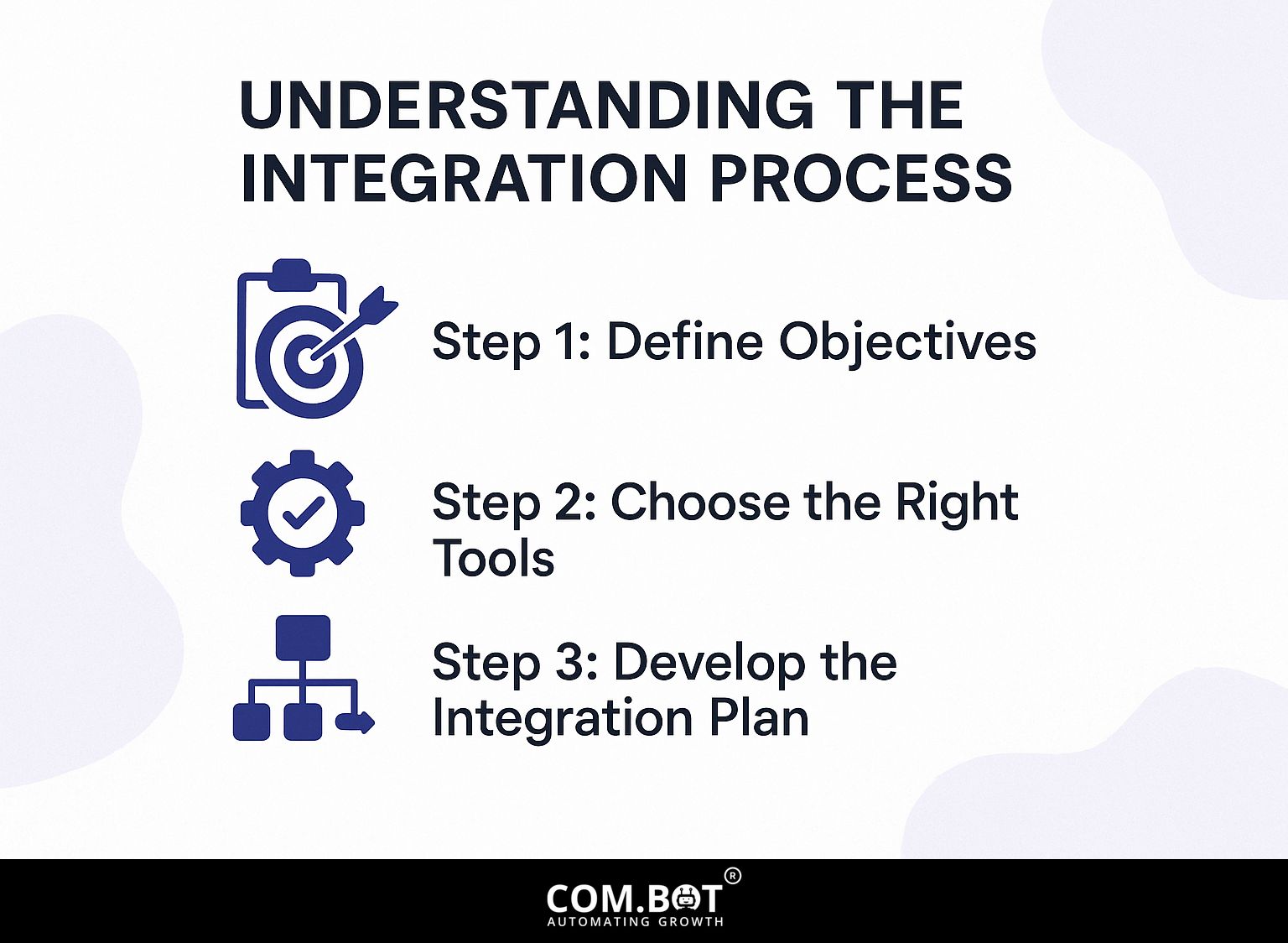
The steps needed to combine systems are important for a smooth move to a complete CRM system. Worth exploring: WhatsApp CRM Integration: Applications and Third-Party Tools.
Step 1: Define Objectives
Defining clear objectives is the first step in CRM integration, guiding the overall strategy and ensuring alignment with business goals.
To set goals that are clear and can be monitored, follow the SMART rules: Specific, Measurable, Achievable, Relevant, and Time-bound.
For example, if you want more leads, set a specific target like “increase form submissions by 20% in the next three months.” To keep more customers, set a goal such as “improve retention rates by 10% within six months through personalized follow-ups.”
Tools like HubSpot or Salesforce help track these metrics, ensuring your goals are consistently monitored and updated.
Step 2: Choose the Right Tools
Selecting the right tools, such as Zapier for integration or HubSpot for CRM, can significantly affect the success of your CRM integration efforts.
To make the integration work well, think about a few important factors.
Cost is paramount; evaluate your budget against the pricing models of tools like Zapier (starting at $19/mo) and HubSpot (which offers a free tier but scales based on features).
Functionality should align with your specific needs, such as automating workflows with Zapier or managing customer interactions in HubSpot.
Assess user-friendliness-platforms with intuitive interfaces, like ManyChat for chat automations, often reduce onboarding time, allowing you to focus on your core business tasks.
Step 3: Develop the Integration Plan
A good integration plan details the workflows, data flow, and communication channels to make sure all parts work together smoothly.
- To build a strong integration plan, begin by outlining data mapping to explain how data moves between systems.
- Establish communication protocols, which include specifying APIs or middleware required for seamless interaction.
- Next, schedule user training sessions to familiarize team members with the new systems, emphasizing best practices for usage and maintenance.
- Looking at possible problems and setting up a system for ongoing feedback can make integration work better.
- Creating a full plan might require a few weeks to complete, but the advantages in the long run are significant.
Key Benefits of Custom CRM Integration
Custom CRM integration provides many advantages, like better data handling and a better customer experience, which can lead to more business growth. For those interested in exploring the possibilities further, our detailed WhatsApp API Integration Guide offers a comprehensive overview of AI, CRM, and automation strategies that can enhance CRM functionalities.
CRM Integration Statistics 2024
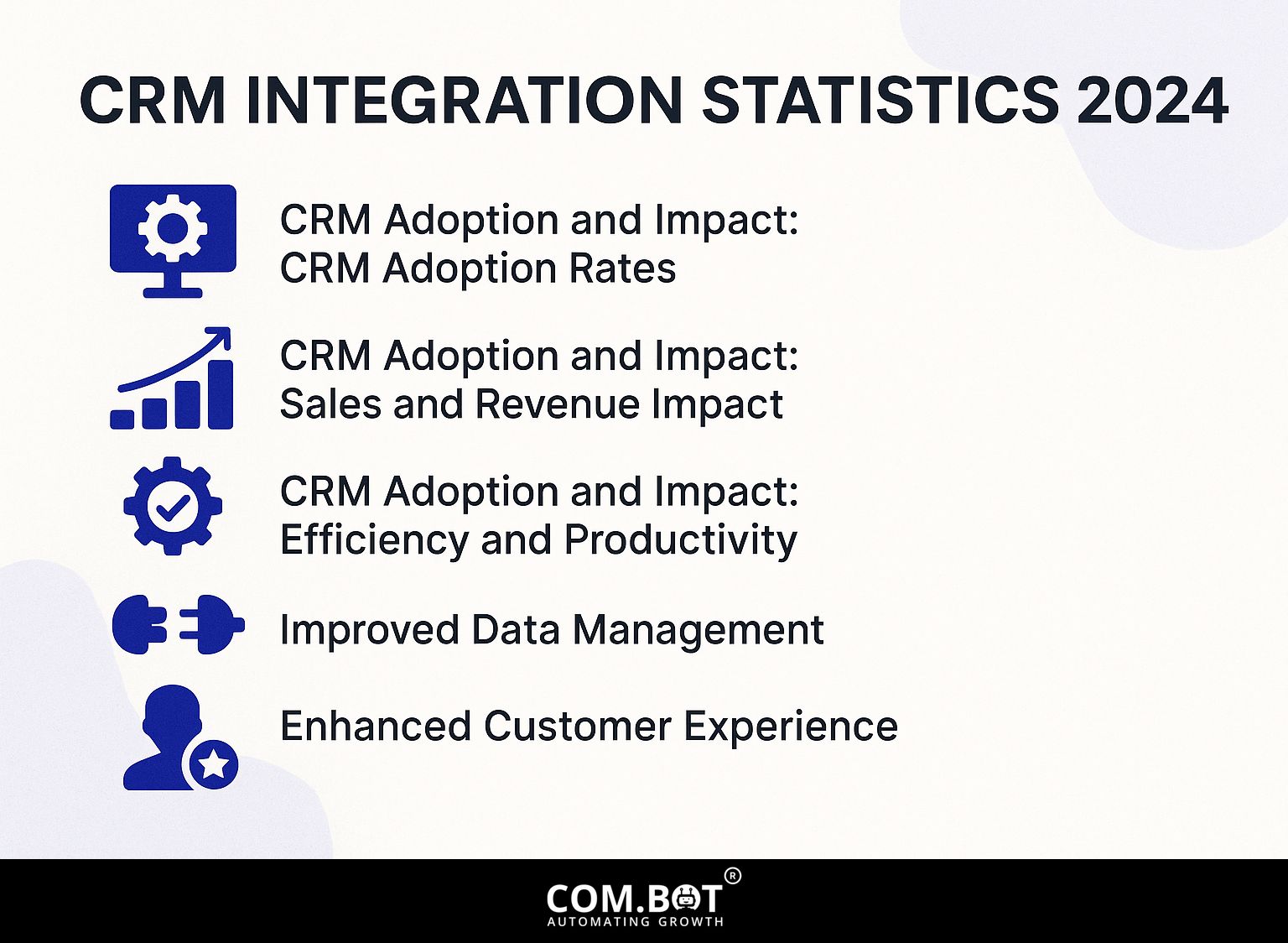
CRM Adoption and Impact: CRM Adoption Rates
CRM Adoption and Impact: Sales and Revenue Impact
CRM Adoption and Impact: Efficiency and Productivity
CRM Adoption and Impact: CRM Technology Trends
The CRM Integration Statistics 2024 The information gives a clear look at how Customer Relationship Management (CRM) systems are being used and their major effects on different areas of business. This analysis covers adoption rates, sales and revenue impact, efficiency improvements, and emerging technology trends within CRM systems.
CRM Adoption Rates show a major acceptance among companies, with a common 73% adoption rate. Tech companies are at the forefront of this trend with an outstanding 94% adoption rate They often quickly adopt the latest technologies. Small businesses are not far behind, with a 71% adoption rate, showing they see CRM systems as important for managing customers and staying ahead of competitors.
Sales and Revenue Impact Statistics show that CRM systems help achieve business goals. An impressive 86% of businesses exceed sales goals using CRM, while 97% meet or exceed these goals This demonstrates the essential role of CRM in sales strategy. Companies also show a strong 25.5% increase in sales revenue when CRM systems are implemented, emphasizing their value in driving growth.
Efficiency and Productivity gains are evident as CRM systems help reduce sales cycle days by 11 days and save employees an average of 7.5 hours per week. These systems also contribute to a 15.5% decrease in customer acquisition costs and a 19.5% increase in sales productivity, helping businesses save resources and reduce costs.
CRM Technology Trends reveal that 65% of businesses employ AI within their CRM systems, enhancing decision-making and knowledge of customers. Moreover, 70% use mobile CRM, reflecting the shift towards on-the-go accessibility for field and remote teams. The adoption of cloud-based CRM is at 87%, illustrating the preference for scalable, flexible solutions. Additionally, there’s a noted 17% increase in lead conversions, affirming CRM’s effectiveness in nurturing potential customers through the sales funnel.
Overall, the data shows that CRM systems are important in today’s business plans. They improve sales, productivity, and work processes by using new technologies to stay ahead. Businesses investing in CRM are likely to see continued growth and improved customer engagement in the coming years.
Improved Data Management
Linking CRM systems collects customer information in a single location, simplifying report creation and data handling. This can significantly aid in making more informed choices.
For example, Salesforce allows companies to create centralized dashboards that visualize key metrics such as sales trends, customer interactions, and service response times.
Businesses like Zendesk connect their support ticket data with Salesforce to fully understand how happy their customers are.
Tools like HubSpot can handle data entry, so sales teams can focus on talking to clients instead of managing data. This approach simplifies operations and improves data analysis, leading to better business decisions.
Enhanced Customer Experience
Businesses use CRM systems to provide personalized marketing, which helps them engage with customers better and strengthen loyalty.
For instance, a retail company implemented Salesforce CRM and customized it to track individual purchase histories, resulting in a 30% increase in customer satisfaction ratings.
They used HubSpot to send follow-up emails automatically, increasing interaction by 20%. Integrating chatbots allowed for 24/7 customer support, further elevating the customer experience.
By giving personalized suggestions based on reviewed data, businesses build trust and loyalty with customers, creating a dependable group of clients.
Challenges in Custom Integration
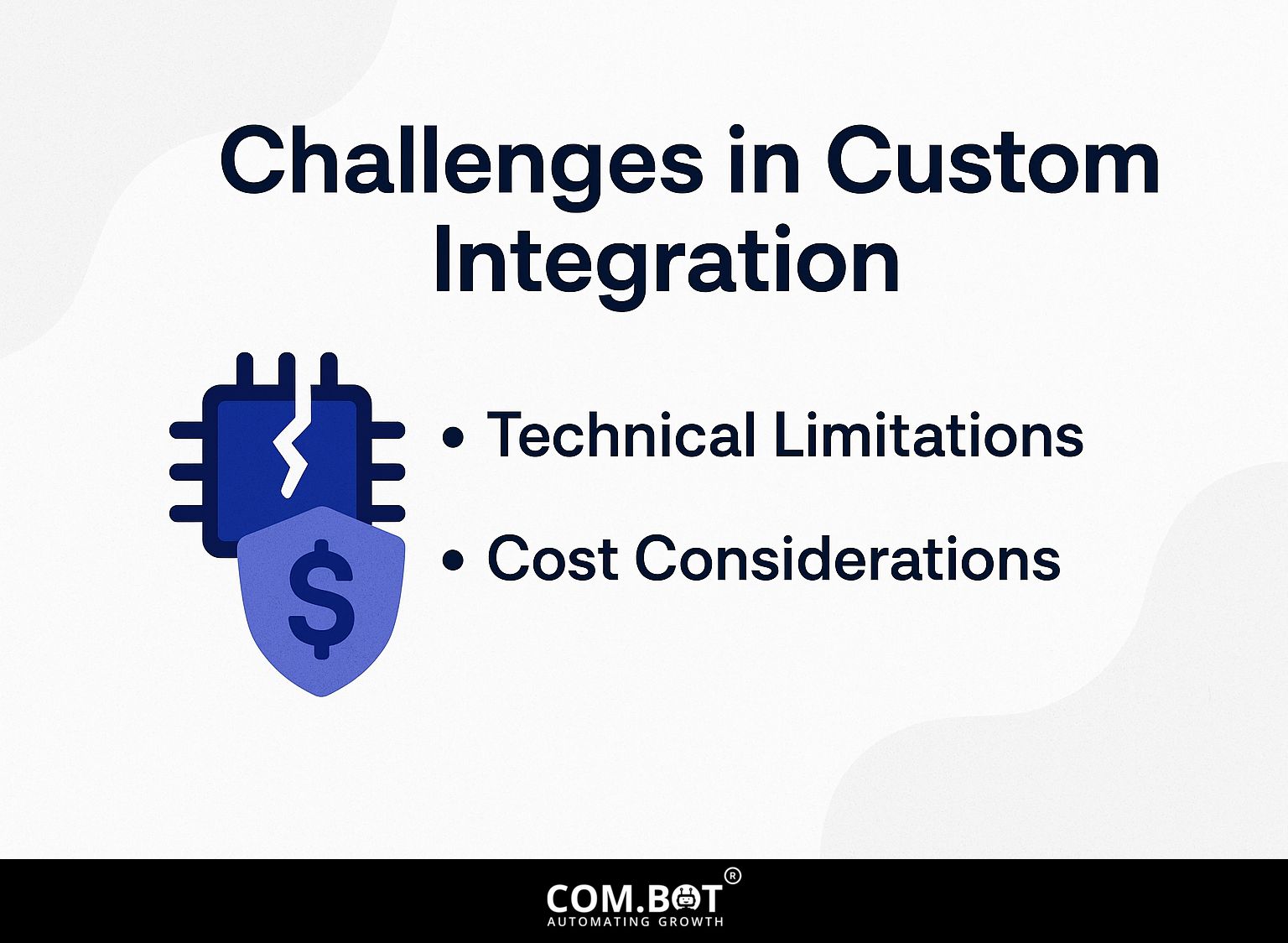
Even though custom CRM integration has benefits, it also presents challenges like technical limits and cost issues that businesses must deal with. To effectively overcome these hurdles, considering various tools and applications, such as those explored in our discussion on WhatsApp CRM integration tools, can be beneficial.
1. Technical Limitations
Technical limitations, such as API restrictions and compatibility issues, can hinder the effectiveness of CRM integration efforts.
For example, a business may struggle with data synchronization due to mismatched data formats between their CRM and marketing platforms. To address this, consider using middleware tools like Zapier or Integromat, which can bridge these compatibility gaps.
If API rate limits slow down getting data, using bulk data processing can make updates more efficient. Regularly auditing integrations can help identify and rectify issues early.
By actively handling these challenges, organizations can improve how well their CRM systems work together, resulting in better interactions with customers.
2. Cost Considerations
Costs are important in CRM integration, with prices possibly varying from hundreds to thousands of dollars based on the extent.
A complete budget should cover the initial license costs, as well as the ongoing expenses for maintenance, data migration, and staff training.
For instance, Salesforce integration fees can exceed $150 per user monthly, while additional training workshops might cost around $1,000.
Companies like HubSpot have shown successful cost management by introducing changes step-by-step, letting teams gradually get used to them while keeping interruptions to a minimum.
Keep in mind any additional costs such as customization and continuous support to fully understand your expenses.
Best Practices for Successful Integration
Using effective methods in connecting CRM systems can lead to success and support ongoing progress in managing customer relationships. For those looking to delve deeper into this topic, exploring the benefits of WhatsApp API integration can provide valuable insights into leveraging AI and automation in CRM integration.
1. Testing and Quality Assurance
Careful testing and quality checks are important when setting up CRM systems to make sure everything works right.
Begin by running unit tests to check if each part works correctly, like data input forms and reporting features. Integrate integration tests next, which assess how well the CRM interacts with other systems, like marketing automation tools.
Companies like Salesforce have used careful testing, resulting in easier launches and fewer issues after going live.
Using Selenium for testing can help save time and increase accuracy. By sticking to these methods, businesses can provide a smooth user experience and improve overall work efficiency.
2. Continuous Improvement
Businesses can make ongoing updates to their CRM systems by using customer feedback and meeting changing demands. Set up meetings every three months to examine performance numbers and how happy users are.
For example, using tools like SurveyMonkey can quickly collect customer feedback. Consider employing A/B testing to evaluate different CRM features or workflows.
Use the collected data to choose which updates to prioritize, ensuring the system adjusts to meet user needs.
Companies like HubSpot show this process by continually improving their software based on customer feedback to make it better for users and add more features.
Frequently Asked Questions
1. What is the process of creating custom CRM integration?
The process of creating custom CRM integration involves identifying the specific business needs, selecting the appropriate CRM platform, mapping out the data integration process, and implementing the integration with the help of a CRM expert.
2. What are the benefits of creating custom CRM integration?
The benefits of creating a customized CRM link include improved productivity and faster work, greater customer knowledge, easier communication and data sharing, and a more personalized and seamless customer experience.
3. How long does it take to create custom CRM integration?
The time it takes to create custom CRM integration varies depending on the complexity of the project and the availability of resources. It might take between a few weeks and several months.
4. Do I need a CRM expert to create custom CRM integration?
While it is recommended to have a CRM expert on board for a smooth and successful integration, it is not always necessary. Many CRM platforms provide tools and resources for creating custom integrations that can be used by non-experts as well.
5. Can I integrate multiple CRM platforms with this custom integration?
Yes, one of the key benefits of creating custom CRM integration is the ability to connect multiple CRM platforms and centralize your customer data. This can help improve data accuracy and eliminate the need for manual data entry.
6. Is it possible to make changes to the custom CRM integration after it has been implemented?
Yes, it is possible to make changes to the custom CRM integration even after it has been implemented. However, it’s best to plan and test any changes thoroughly to make sure they don’t interfere with the integration or lead to data loss.
